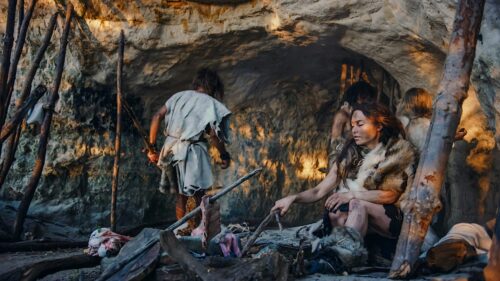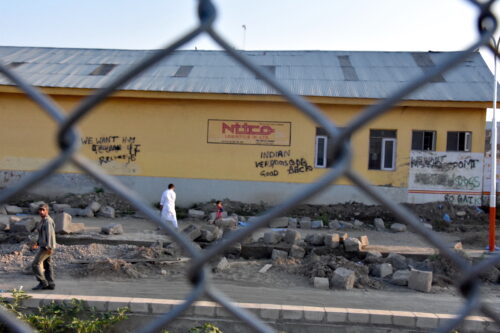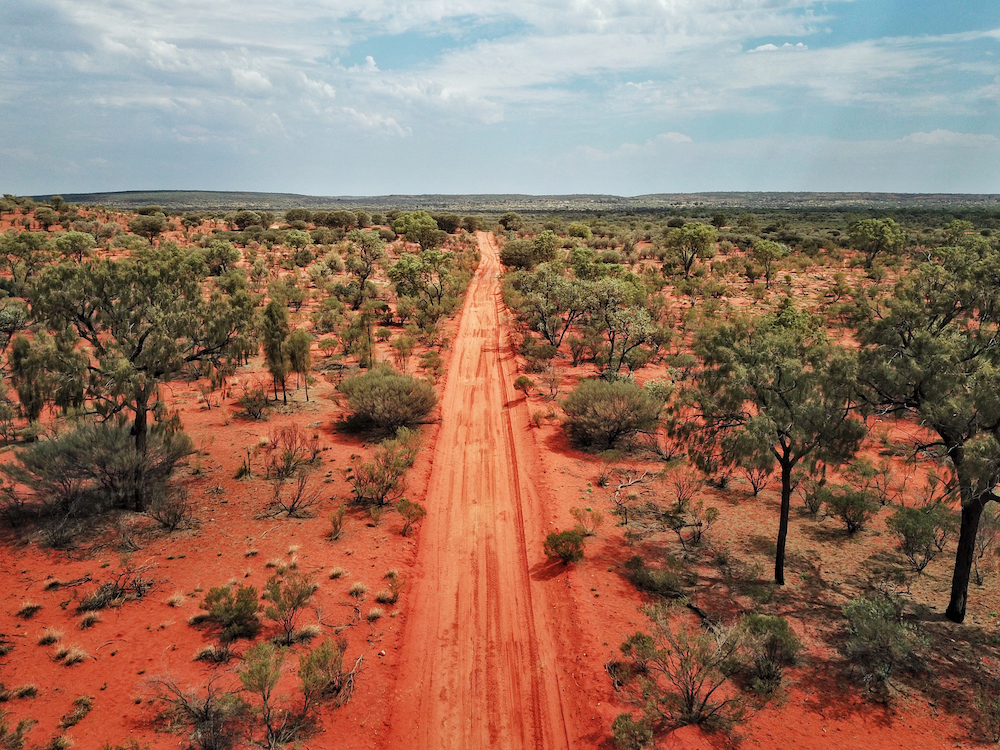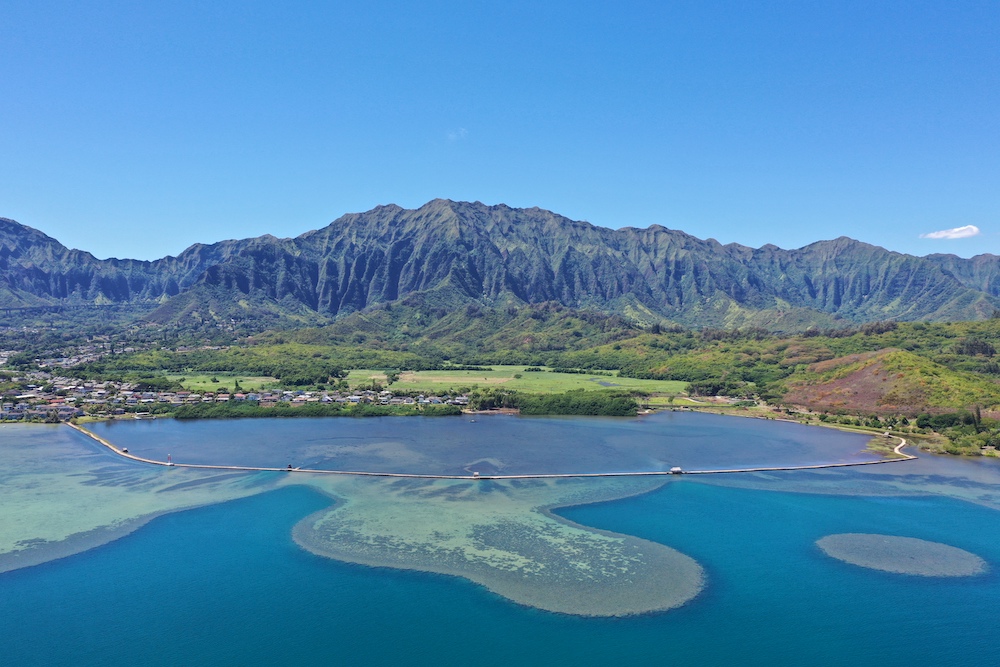How “Wilderness” Was Invented Without Indigenous Peoples
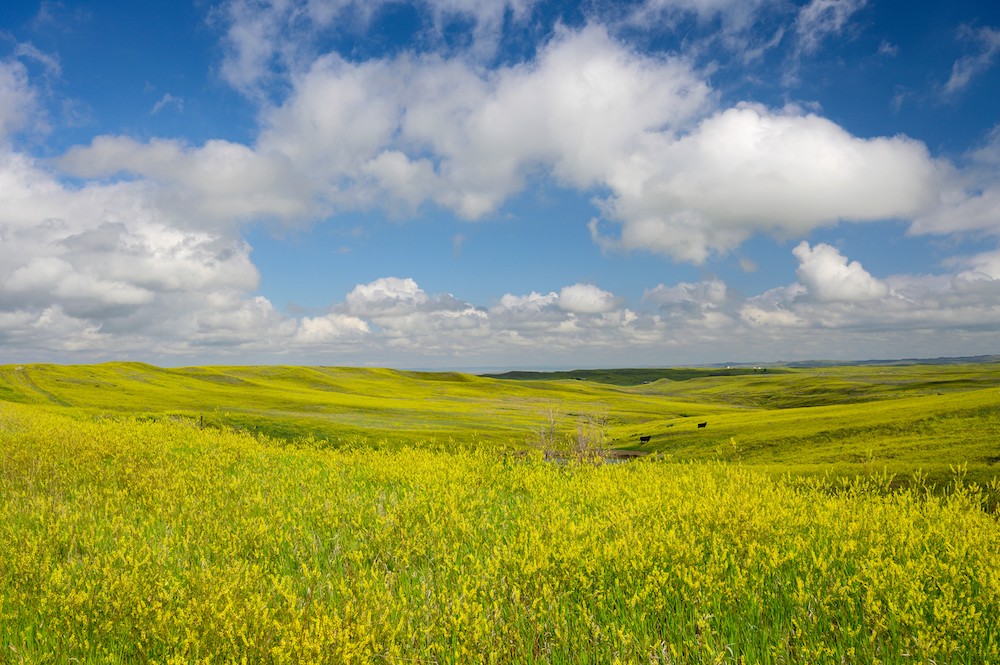
The year was 1832, and beneath an immense, cloud-filled sky, William Cullen Bryant guided his horse through rippling grasslands as he looked upon a land seemingly shaped by God. A former lawyer, an editor, and a poet, Bryant was visiting his brothers, homesteaders who had set out for the Illinois frontier from Massachusetts two years before.
He found himself stunned into rapture. After riding through the prairie’s “encircling vastness,” he wrote of an empty countryside whose majesty could only have come from a higher power:
“Man hath no power in all this glorious work: /
The hand that built the firmament hath heaved /
And smoothed these verdant swells, and sown their slopes /
With herbage, planted them with island groves, /
And hedged them round with forests.”
But Bryant’s reading of the prairie could not have been more wrong.
The treeless expanse that the poet saw had been shaped explicitly by humankind: For centuries, the region’s Native peoples had set low-intensity fires to these grasslands, mimicking the effects of lightning, to encourage game to graze on the new growth that followed. The species growing on these lands, fire-adapted and free of arboreal shade, were there because of humanity.
This misconception—that North America’s landscapes were essentially untouched before European arrival—actually fits into a much larger story. Geographer William Denevan labeled it the “pristine myth,” the belief that all of nature was once a sparsely populated wilderness, where humans had little or no influence. Many Europeans and Euro-Americans imagined the landscapes of the Americas as prime examples of such natural spaces.
“I loathe that word ‘pristine.’ There have been no pristine systems on this planet for thousands of years,” says Kawika Winter, an Indigenous biocultural ecologist at the University of Hawaiʻi at Mānoa. “Humans and nature can co-exist, and both can thrive.”
For example, in the Proceedings of the National Academy of Sciences (PNAS) in April, a team of researchers from over a dozen institutions reported that humans have been reshaping at least three-quarters of the planet’s land for as long as 12,000 years. In fact, they found, many landscapes with high biodiversity considered to be “wild” today are more strongly linked to past human land use than to contemporary practices that emphasize leaving land untouched. This insight contradicts the idea that humans can only have a neutral or negative effect on the landscape.
Anthropologists and other scholars have critiqued the idea of pristine wilderness for over half a century. Today new findings are driving a second wave of research into how humans have shaped the planet, propelled by increasingly powerful scientific techniques, as well as the compounding crises of climate change and biodiversity loss. The conclusions have added to ongoing debates in the conservation world—though not without controversy. In particular, many discussions hinge on whether Indigenous and preindustrial approaches to the natural world could contribute to a more sustainable future, if applied more widely.
Thanks to today’s environmental challenges, these debates have also reached the public sphere. Spencer Greening, a member of the Gitga’at First Nation and a graduate student studying Indigenous resource management and archaeology at Simon Fraser University in British Columbia, Canada, believes this attention could have a positive effect. Often, Greening explains, science and research are tools used to extract profit from nature.
“As a society, if we were to flip the script and say: ‘Instead of putting our resources into excess profit, we need to put our resources into saving the planet,’” Greening says. “That shift is going to be huge.”
The myth of pristine wilderness has deep roots. Some draw the line all the way back to 1095, when Pope Urban II purportedly introduced the concept of terra nullius: the idea that any non-Christian land is a blank slate for the taking. The link between this phrase and Pope Urban may be apocryphal; nonetheless, over the centuries, waves of European colonization rode on the back of this sentiment. For example, in the 17th and 18th centuries, English writers expounded on the idea that if Indigenous peoples did not fully occupy, or sufficiently cultivate, land, they had no title to it. These concepts formed the basis of British colonization, including their justification for ruling Australia and dispossessing Aboriginal peoples of their lands.
Such thinking led many European colonists to ignore the influence of Indigenous peoples they encountered. As University of Maryland, Baltimore County, ecologist Erle Ellis, a lead author on the PNAS study, puts it, “Within the pristine myth, these people don’t have agency, and that’s pretty important to the whole concept” of that myth. “Once you start thinking of these people as actors and as shaping nature, it means that anything you do to them changes nature.”
The Industrial Revolution, which began in Britain in the late 18th century and then spread to other parts of Europe and to the U.S., radically shifted conceptions of humans and the natural world. New jobs in industry moved populations away from rural areas and into cities. Meanwhile, factories created rapid economic growth that commodified natural resources, leading to pollution and resource depletion.
In reaction, thinkers in both Europe and the U.S. began to romanticize the concept of wilderness as untouched by humanity and its destructive influence. Writers and artists, such as Henry David Thoreau and George Catlin, depicted American landscapes either without humans or featuring Indigenous communities who had minimal to no impact on their environment.
As Denevan pointed out in his formative paper on the pristine myth, people in the United States in the mid-18th and 19th centuries, in particular, were observing a landscape in which Indigenous communities had been dramatically depopulated. Colonization brought genocide, ethnic cleansing, and pathogens to the Americas. Though estimates vary, one study determined that Indigenous peoples in the Americas lost at least 65 percent and as much as 90 percent of their populations by around 1600. To some European and Euro-American explorers and pioneers in the United States, certain spaces truly appeared to be people-free wilderness.
In the years since, Western societies have tended to tell just two stories about healthy, species-rich ecosystems. In one, humans are destroyers, fated to overharvest resources and tip nature into chaos. In the other, Indigenous peoples receive from the land and change little in return.
But there was always evidence running counter to these narratives. In Australia, for example, colonists viewed the landscape with puzzlement, describing it as looking cultivated, like a park found on one of Britain’s private estates. At the same time, some colonists disparaged Aboriginal fire management, likely without realizing that this practice had nurtured the environment they encountered.
Learn more, from our archives: “How Early Humans Shaped the World With Fire”
Similarly, prior to colonization, intentional Indigenous burning practices shaped the prairies that Bryant rode through in 1832. By amplifying a natural cycle, intentional fires stimulated plant growth and kept colonizing tree species at bay, boosting diversity and allowing expanses of fire-adapted grasses to thrive.
On both North American coasts, tribes used fire to encourage the growth of food trees, like nut-bearing oak and chestnut, which created the wide-open forests that dazzled Europeans when they arrived. Today a direct line can be drawn from the loss of cultural burning practices in Australia and the American West to the wildfires that, exacerbated by climate change, have scorched both regions in recent years.
Around the world, human influence is visible in “wilderness” nearly everywhere. Even the vast Amazon rainforest—what many non-Native people may see as the premier example of unpeopled wilderness—bears enduring evidence of human intervention.
In a 2017 study, researchers found that tree species with food and cultural value, like the Brazil nut and cocoa tree, were “hyperdominant” across the Amazon Basin: about five times more common than they would expect from chance alone. These trees were often found far from their native range and were most abundant around archaeological sites that predated the 16th century, suggesting that humans shaped the makeup of the forest visible today.
In addition, satellite imagery combined with ground surveys has revealed the traces of bustling civilizations in parts of the Amazon. Though scientists once believed the Amazon Basin held as few as 1–2 million people, more recent models that factor in the particular soils created by human occupation suggest at least 8–10 million people could have lived in the region.
Ellis explains that studies debunking the pristine myth began with research in the Americas, but haven’t stopped there. “It just kept spreading,” he said. “People kept looking, they would ask, ‘Is there a human influence in these places?’ And you find it.”
Many “wild,” highly biodiverse landscapes are strongly linked to past human land use.
The PNAS study Ellis co-authored, for example, underscores how global these patterns are. For that analysis, he and his colleagues integrated data from geographical, archaeological, and conservation science with the most up-to-date computer model available to map human populations and land use.
The model spit out maps of Earth categorized by “anthrome,” that is, patterns in the ways humans have interacted with and altered ecosystems. By 10,000 B.C., their results suggest, there was relatively little “wild,” uninhabited land left in Europe, Asia, Africa, Latin America, or the Caribbean. At most, only 17 percent of Earth’s lands showed no evidence of human habitation or use, a number the authors believe is likely an overestimate.
The model also suggests that by 10,000 B.C., 77 percent of current key biodiversity areas—the rainforests and woodlands, grasslands, reefs, and marshes that today are refugia for important species—were located in “cultured” anthromes, where small human populations intensively used less than 20 percent of the land.
Further, this approach suggests that, around 1500, this connection between human cultivation and biodiversity started to fall apart. This shift coincides with the period in which European colonization kicked off in earnest.
If many “wild” places are actually a product of human intervention, what does that mean for conserving such spaces?
The myth of pristine wilderness has long influenced discussions of protecting and preserving nature. The assumption that human activity is harmful or at best neutral for the environment is prominent within conservation and shapes environmental policy.
This thinking informs public opposition to Indigenous management, and has led to laws that bar Indigenous peoples from living and hunting within national parks and other forms of protected land. (See, for example, the Blackfeet Nation in Glacier National Park.) Such rules largely ignore the varied ways that humans can interact with nature.
Learn more, from our archives: “Stop Calling the Aleutians Pristine”
Yet in October 2021, scholars based in Australia and Germany published their examination of case studies from around the world that showed displacing Indigenous people for the sake of “wilderness” has negatively impacted landscapes. Among the examples, the researchers highlighted traditional swidden farming, in which farmers let their plots lie fallow to regenerate for a few years after cultivation, in the uplands of tropical Asia and New Guinea. Though some critics have framed this method as incompatible with conservation, research suggests this agricultural approach can increase biodiversity and make forests more resilient to climate change.
Not everyone believes that widespread adoption of preindustrial or Indigenous practices would offer a universal solution for managing nature’s resources, however. Among the critiques is the observation that humans have unquestionably contributed to extinctions throughout history, at many different scales. (That said, humanity’s role in past extinctions is complex and controversial—as archaeologists studying the disappearance of mammoths, mastodons, and giant sloths can attest.)
Another point of contention is whether traditional and Indigenous management practices are truly sustainable for local species, or simply sustainable because they are being used to support relatively small human populations. Given the size of the Homo sapiens population globally today, perhaps it is not realistic to imagine that people can be trusted to preserve nature if some of it isn’t set aside.
Ellis notes that many of these arguments are motivated by fears that “debunking” wilderness will lead to a free-for-all, giving people license to denude nature at will. But he believes this debate misses the more fundamental point: A recognition that cultural beliefs, rather than scientific fact, have shaped the entire “wilderness” concept.
Culture, Ellis adds, is flexible: “You simply can’t say what a human society can do.”
For instance, in Hawaiʻi, Winter is training people to rethink what ecologists term “ecosystem services,” the resources—including food, fuel, and shelter—that environments provide humans. As manager of the Heʻeia National Estuarine Research Reserve, he works with nonprofits that are revitalizing Hawai‘i’s traditional moku system of land management, in which humans care for the land holistically on small communities called ahupuaʻa.
Whether planting seeds, gathering food from the forest, restoring a fishpond, or harvesting from the sea, the mindset of people in the ahupuaʻa is one of interdependence: that their actions in one place affect all the others in their moku and that the land’s health is essential to the community’s health—and vice versa.
“If we define ecosystem services through an Indigenous lens, it looks like this reciprocal relationship,” Winter says. “The overarching theme is to give before you take.”
Greening takes a similar position. As part of his doctoral thesis, he is examining how natural resource management plans could be rewritten to include humans as a member of a relationship with the land and its resources. “You have these boundaries of how you’re supposed to harvest them and live with them,” he said. “That’s what the Western world has lost with industrialization: that we are a part of this ecosystem.”





























